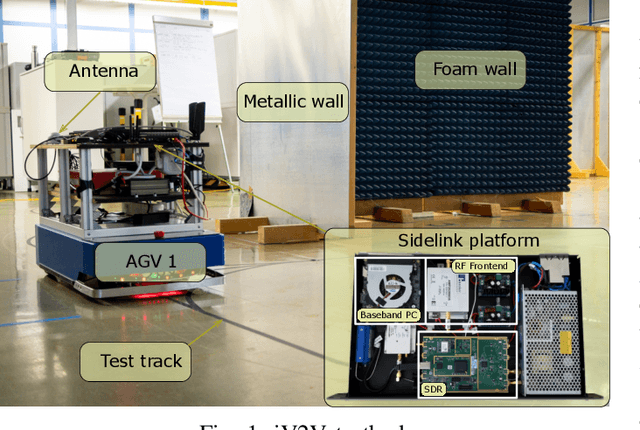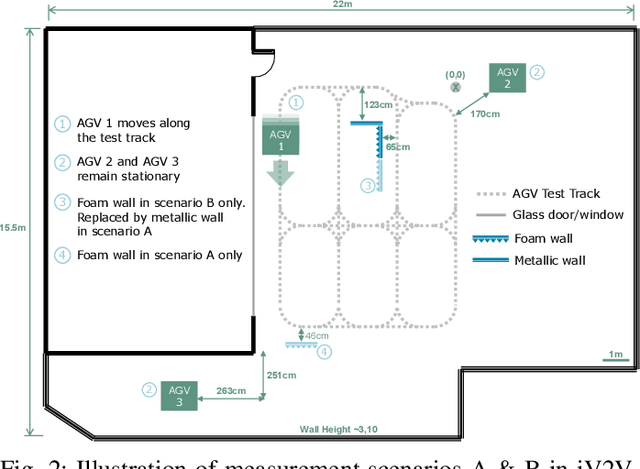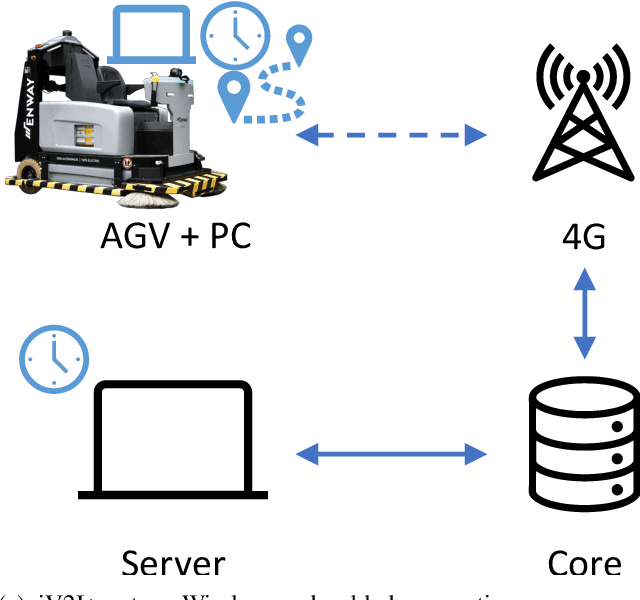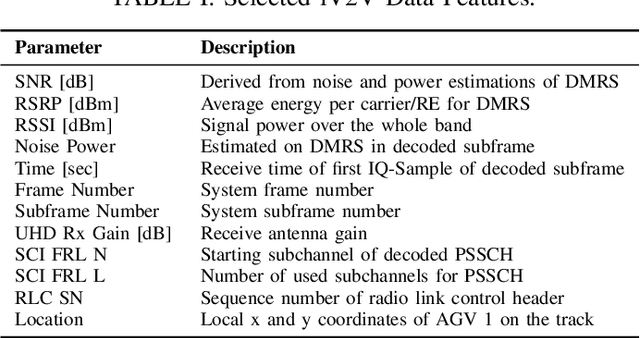Rodrigo Hernangómez
Optimized Detection with Analog Beamforming for Monostatic Integrated Sensing and Communication
Apr 15, 2024Abstract:In this paper, we formalize an optimization framework for analog beamforming in the context of monostatic integrated sensing and communication (ISAC), where we also address the problem of self-interference in the analog domain. As a result, we derive semidefinite programs to approach detection-optimal transmit and receive beamformers, and we devise a superiorized iterative projection algorithm to approximate them. Our simulations show that this approach outperforms the detection performance of well-known design techniques for ISAC beamforming, while it achieves satisfactory self-interference suppression.
QoS prediction in radio vehicular environments via prior user information
Feb 27, 2024Abstract:Reliable wireless communications play an important role in the automotive industry as it helps to enhance current use cases and enable new ones such as connected autonomous driving, platooning, cooperative maneuvering, teleoperated driving, and smart navigation. These and other use cases often rely on specific quality of service (QoS) levels for communication. Recently, the area of predictive quality of service (QoS) has received a great deal of attention as a key enabler to forecast communication quality well enough in advance. However, predicting QoS in a reliable manner is a notoriously difficult task. In this paper, we evaluate ML tree-ensemble methods to predict QoS in the range of minutes with data collected from a cellular test network. We discuss radio environment characteristics and we showcase how these can be used to improve ML performance and further support the uptake of ML in commercial networks. Specifically, we use the correlations of the measurements coming from the radio environment by including information of prior vehicles to enhance the prediction of the target vehicles. Moreover, we are extending prior art by showing how longer prediction horizons can be supported.
Towards an AI-enabled Connected Industry: AGV Communication and Sensor Measurement Datasets
Jan 10, 2023



Abstract:This paper presents two wireless measurement campaigns in industrial testbeds: industrial Vehicle-to-vehicle (iV2V) and industrial Vehicle-to-infrastructure plus Sensor (iV2I+). Detailed information about the two captured datasets is provided as well. iV2V covers sidelink communication scenarios between Automated Guided Vehicles (AGVs), while iV2I+ is conducted at an industrial setting where an autonomous cleaning robot is connected to a private cellular network. The combination of different communication technologies, together with a common measurement methodology, provides insights that can be exploited by Machine Learning (ML) for tasks such as fingerprinting, line-of-sight detection, prediction of quality of service or link selection. Moreover, the datasets are labelled and pre-filtered for fast on-boarding and applicability. The corresponding testbeds and measurements are also presented in detail for both datasets.
Berlin V2X: A Machine Learning Dataset from Multiple Vehicles and Radio Access Technologies
Dec 21, 2022Abstract:The evolution of wireless communications into 6G and beyond is expected to rely on new machine learning (ML)-based capabilities. These can enable proactive decisions and actions from wireless-network components to sustain quality-of-service (QoS) and user experience. Moreover, new use cases in the area of vehicular and industrial communications will emerge. Specifically in the area of vehicle communication, vehicle-to-everything (V2X) schemes will benefit strongly from such advances. With this in mind, we have conducted a detailed measurement campaign with the purpose of enabling a plethora of diverse ML-based studies. The resulting datasets offer GPS-located wireless measurements across diverse urban environments for both cellular (with two different operators) and sidelink radio access technologies, thus enabling a variety of different studies towards V2X. The datasets are labeled and sampled with a high time resolution. Furthermore, we make the data publicly available with all the necessary information to support the on-boarding of new researchers. We provide an initial analysis of the data showing some of the challenges that ML needs to overcome and the features that ML can leverage, as well as some hints at potential research studies.
 Add to Chrome
Add to Chrome Add to Firefox
Add to Firefox Add to Edge
Add to Edge